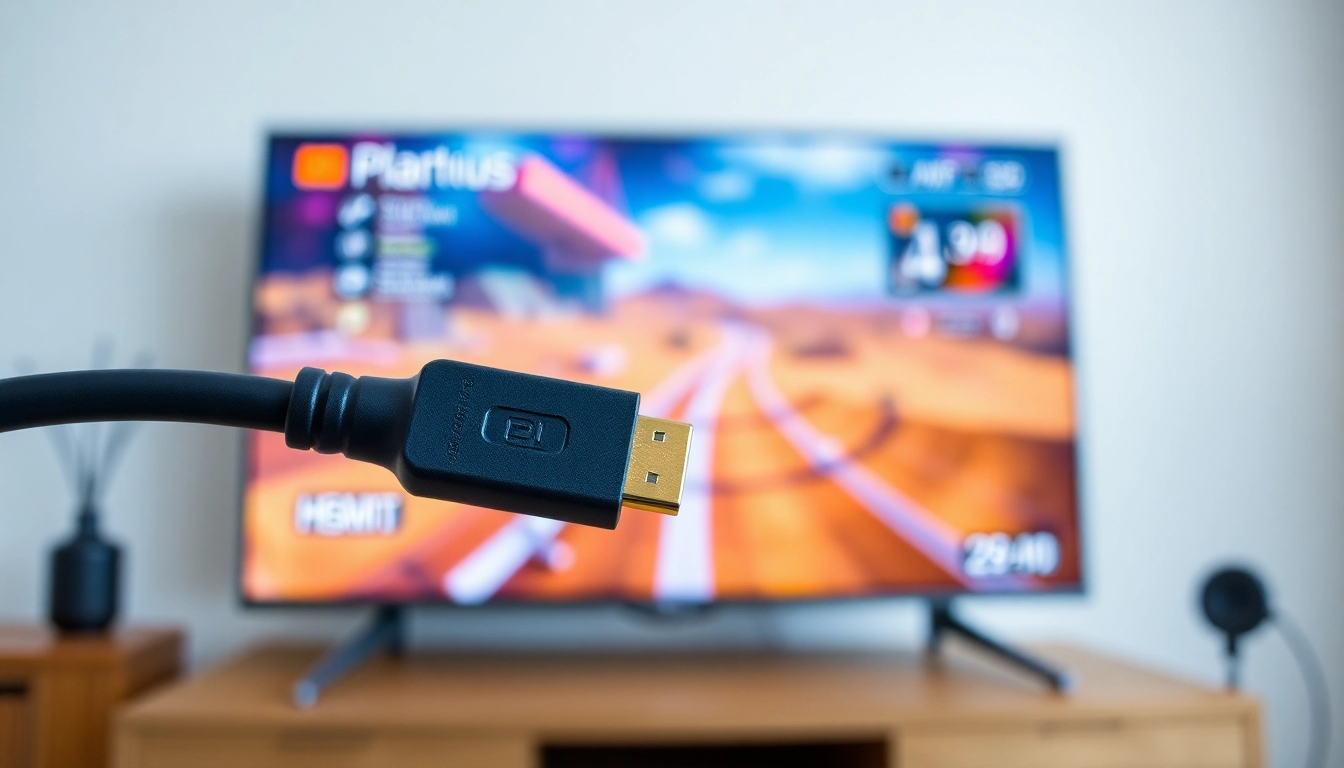Mastering Teste CS: Optimize Your Connection for Seamless Gaming Performance
Understanding the Importance of Teste CS for Gaming and Streaming
In the modern digital era, online gaming and streaming have become integral parts of entertainment for millions worldwide. Whether you’re an avid gamer or a content creator, ensuring a stable and fast internet connection is paramount for a seamless experience. This is where teste cs comes into play, serving as a vital diagnostic tool to evaluate and optimize your network performance for these demanding activities. By accurately assessing your internet’s capabilities, gamers and streamers can preemptively identify issues, reduce latency, and improve overall quality, allowing for uninterrupted gameplay and high-definition streaming that captivates audiences.
What Is Teste CS and Why It Matters
“Teste CS” — short for “Testes de Conexão de Serviços” — is a specialized network testing process tailored for online gaming and streaming. It measures vital parameters such as ping (latency), jitter, upload and download speeds, packet loss, and stability over a given period. For gamers, especially those engaged in fast-paced titles like Counter-Strike or Fortnite, even milliseconds of delay can be the difference between victory and defeat. Similarly, streamers require consistent bandwidth to deliver high-quality content without buffering or quality drops. Conducting a thorough teste cs allows users to understand their current network status, detect bottlenecks, and implement improvements accordingly.
This process is crucial because Internet Service Providers (ISPs) may advertise high speeds, yet real-world performance often falls short due to congestion, hardware limitations, or signal interference. Regularly performing teste cs helps you verify if your network aligns with your activities’ demands, enabling better planning and upgrades.
Common Challenges with Internet Stability in Gaming
Despite technological advancements, many gamers and streamers face persistent issues related to internet stability. Common challenges include:
- High Ping and Latency: Delays between your actions and server responses can lead to lag, making gameplay frustrating and less responsive.
- Packet Loss: Data packets lost during transmission cause jitter and unpredictable connection behavior, degrading the gaming experience.
- Bandwidth Constraints: Insufficient upload or download speeds prevent smooth streaming, especially when multiple devices share the same network.
- Network Congestion: Peak hours often result in overloaded networks, leading to slow speeds and increased latency.
- Hardware and Router Limitations: Outdated routers or poorly configured network setups can cause instability and signal interference.
Understanding these challenges highlights the importance of regular testing. By identifying specific issues with your connection, you can tailor solutions such as upgrading hardware, optimizing network settings, or negotiating better plans with your ISP.
How Teste CS Enhances User Experience
Implementing regular teste cs practices empowers users to maintain optimal network health. Accurate tests reveal whether your internet connection can handle the real-time demands of gaming and streaming. This proactive approach minimizes disruptions, reduces frustrations, and ensures that your online activities are performed at peak performance levels.
Moreover, understanding your network’s metrics aids in making informed decisions—whether upgrading your internet plan, switching providers, or configuring your router for better performance. For instance, a consistent high ping time during teste cs may prompt you to consider fiber-optic plans or enhancing your Wi-Fi signal with mesh systems.
Ultimately, the goal is to deliver a smooth, immersive experience for both you and your audience, translating into higher engagement, better gameplay accuracy, and fewer technical interruptions.
Step-by-Step Guide to Performing an Accurate Teste CS
Preparing Your Network for Reliable Testing
Before initiating a teste cs, ensure your network environment is optimal. This involves:
- Minimizing Background Usage: Close bandwidth-heavy applications such as downloads, updates, or streaming services to prevent skewed results.
- Using a Wired Connection: Ethernet cables provide more consistent and lower latency compared to Wi-Fi, reducing interference and ensuring accurate readings.
- Updating Network Hardware: Make sure your router firmware is current, as updates often improve stability and performance.
- Verifying Device Performance: Use a device with minimal background processes to avoid additional load during testing.
These steps establish a controlled environment, enabling your tests to reflect true network performance rather than temporary fluctuations.
Executing the Teste CS: Best Practices
To get reliable and actionable results, follow these best practices:
- Choose the Right Time: Perform tests during different times of the day to account for varying network loads, such as peak hours versus off-peak.
- Use Dedicated Testing Tools: Employ reputable testing platforms that simulate real-world conditions. Many online tools and software are designed specifically for gamers and streamers.
- Test Multiple Parameters: Record not just ping but also jitter, packet loss, and bandwidth to get a comprehensive view of your connection’s health.
- Conduct Multiple Tests: Repeat tests at intervals to identify consistent issues rather than isolated incidents.
- Document Results: Keep a record of your results to compare over time or after troubleshooting efforts.
This disciplined approach ensures your data accurately reflects your network’s capabilities, guiding effective improvements.
Interpreting Results and Troubleshooting
Understanding your test results is key to addressing connectivity issues:
- Latency (Ping): Values below 50ms are optimal for most gaming. Higher times indicate delays requiring action.
- Jitter: Variability in ping should be minimal; high jitter causes unpredictable lag.
- Packet Loss: Zero or near-zero packet loss signifies stability. Any loss points to network issues.
- Bandwidth: Confirm that speeds meet your streaming or gaming requirements. For streaming in HD, upload speeds of at least 5 Mbps are recommended.
Troubleshooting strategies include restarting routers, reducing connected devices, switching to a wired connection, upgrading your plan, or consulting your ISP for persistent issues. If tests reveal consistently poor performance despite optimizations, it may be time to consider alternative providers or hardware upgrades.
Optimizing Your Internet Connection Based on Test Results
Upgrading Equipment and Plan Options
If testing reveals subpar performance, consider upgrading your internet plan to higher speeds or lower latency options. Fiber-optic connections, where available, often provide the best performance for gaming and streaming. Additionally, investing in modern routers with QoS (Quality of Service) features prioritizes gaming or streaming devices, ensuring they receive bandwidth first.
Advanced network hardware—such as mesh Wi-Fi systems or range extenders—can eliminate dead zones and improve overall stability. For professional streamers, dedicated gaming routers with customizable settings offer significant advantages.
Implementing Network Tweaks for Better Performance
Besides hardware upgrades, simple adjustments can markedly enhance connection quality:
- Allocate Bandwidth: Use QoS settings to prioritize gaming or streaming traffic.
- Optimize Wi-Fi Settings: Change channels to avoid interference, disable unnecessary features, and position routers centrally.
- Limit Background Applications: Ensure no other devices are consuming bandwidth during critical gaming or streaming sessions.
- Secure Your Network: Protect against unauthorized use, which can consume your bandwidth unnoticed.
Regularly revisiting your setup and re-testing ensures these adjustments maintain optimal performance.
Maintaining Consistent Connection Quality Over Time
Stability isn’t a one-time achievement but a continuous process. Schedule periodic teste cs to monitor your connection, especially after hardware changes, updates, or ISP adjustments. Keeping firmware up-to-date, rebooting routers regularly, and managing connected devices are best practices for long-term stability.
Sharing test results with your provider can also prompt proactive support, addressing issues before they escalate and disrupting your gaming or streaming activities.
Comparing Leading Teste CS Tools and Platforms
Top Features to Consider in a Testing Tool
The array of testing platforms ranges from simple speed tests to comprehensive network analyzers. Essential features include:
- Real-time Metrics: Live feedback on ping, jitter, and packet loss.
- Historical Data: Track performance trends over days or weeks.
- Device and Application Prioritization: Identify which devices or apps impact your connection most.
- User-Friendly Interface: Clear, actionable insights without complex setups.
- Compatibility: Cross-platform support for desktops, mobiles, and gaming consoles.
Real User Feedback and Performance Analytics
Platforms with authentic user reviews highlight practical reliability and accuracy. Many dedicated testing tools incorporate community feedback, offering insights into common issues and solutions. Performance analytics reveal bottlenecks, enabling targeted improvements that significantly boost your experience.
Choosing the Right Platform to Improve Your Gaming Experience
Select a testing platform aligned with your specific needs:
- If you require quick, straightforward tests — use consumer-focused speed testers with detailed reports.
- For comprehensive network analysis — opt for professional tools that simulate gaming traffic and track stability over time.
- Consider platforms that integrate with your network hardware or provide automated alerts for stability issues.
Investing in the right platform ensures you stay ahead of potential issues, maintaining an optimal gaming setup.
Future Trends in Internet Testing for Gamers and Streamers
Emerging Technologies in Network Performance Monitoring
Advancements such as AI-driven network management and real-time adaptive testing are shaping the future of internet stability. These technologies can predict issues before they manifest and automatically adjust network settings for optimal performance, crucial for latency-sensitive applications.
Integrating Teste CS with Home Automation Systems
Home automation ecosystems will increasingly incorporate network performance metrics, allowing seamless coordination between routers, smart devices, and gaming/streaming hardware. This integration simplifies maintaining optimal settings and ensures consistent performance without manual intervention.
Adapting to Increasing Data Demands in Online Gaming
As game graphics and streaming quality continue to evolve, network demands escalate. Future testing tools will need to evaluate higher bandwidth capabilities, low latency, and data integrity in real-time, providing gamers and streamers with the insights necessary to upgrade and adapt their setups proactively.

